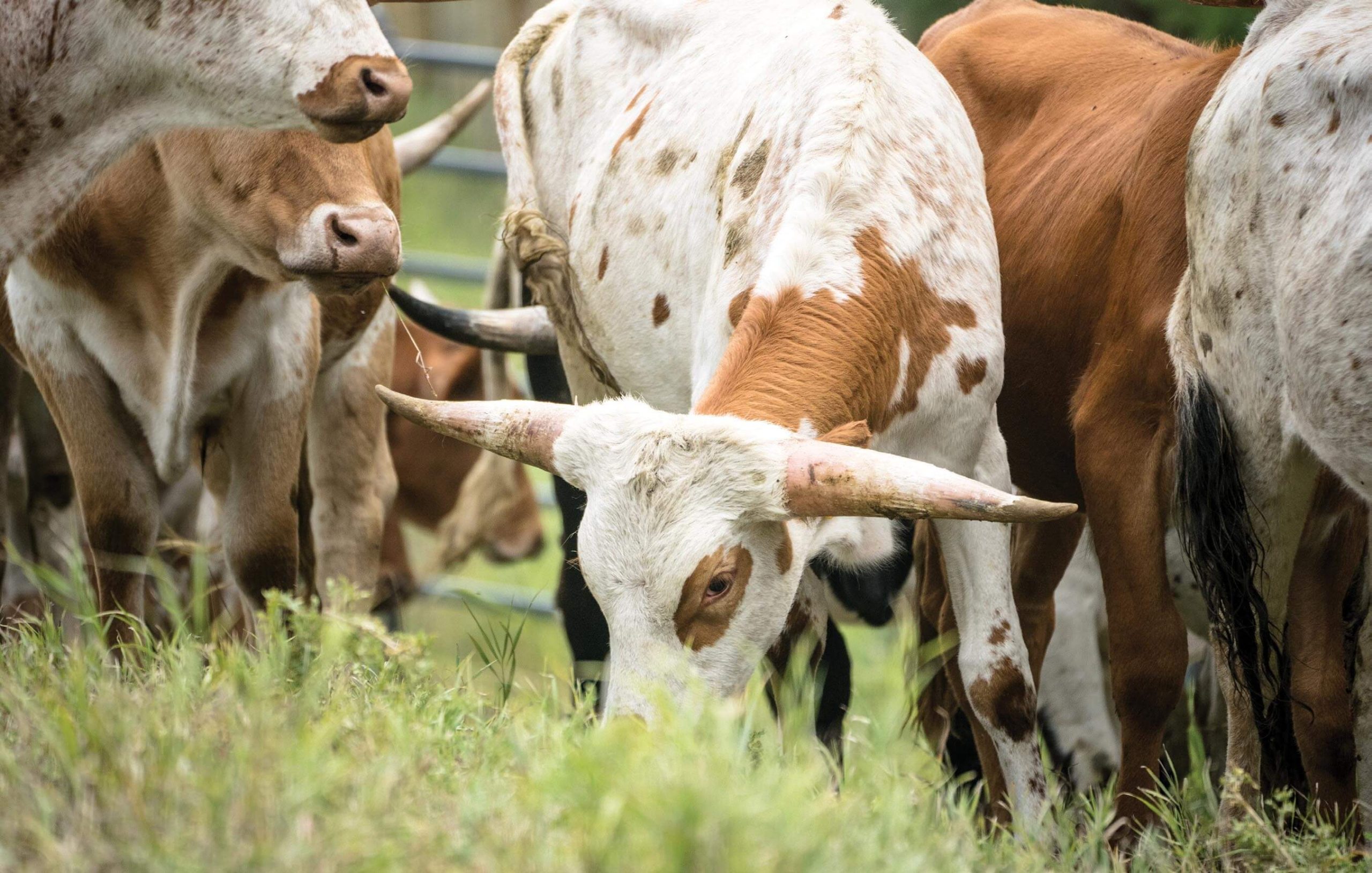
30 May Local Knowledge: Cowboy Ethics
Most of us have at least a passing familiarity with the Texas longhorn. You could probably draw one right now if you had to. You or your kids may have had photos taken with one at a county fair or local rodeo. The unmistakable silhouette of those enormous, almost comical horns inspires curiosity and awe, immediately conjuring up dusty images of the Old West.
The iconic longhorn’s ancestors were first brought to the Americas from Spain in 1493, where they spent the next few centuries essentially feral, ranging the prairie and evolving the natural characteristics that ranchers would eventually come to value, including disease resistance, the ability to forage on marginal pasture, and an independent disposition. They proved to be highly adaptable survivors. By the mid-1800s, longhorn herds were thriving in Mexican summers and Canadian winters alike.
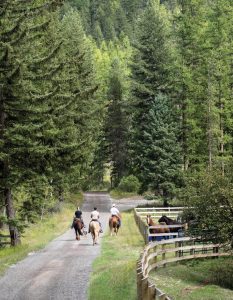
Owner of Montana Longhorn Co., Jeremy Myers sets off with some of the ranch hands to start the round-up before moving cattle to the next range.
However, as the open spaces of the American West were increasingly fenced in, and as new breeds with faster maturity times and heavier carcass weights were popularized, the longhorn dwindled away. The U.S. Forest Service is credited with saving the breed from extinction by setting aside a refuge near Lawton, Oklahoma in 1927, and ever since, a diverse group of dedicated enthusiasts has preserved the longhorn’s once-prized genetics and cultural legacy.
Building on this legacy since 2015 in Montana’s Flathead Valley, the passionate crew of the Montana Longhorn Co. is preserving these remarkable animals while pioneering innovative practices in regenerative agriculture, embodying a forward-thinking approach to ranching and stewardship that respects heritage and sustainability. Their work, rooted in the timeless values of cowboy ethics, is more than a profession — it’s a testament to a life lived with courage, perseverance, and an unwavering commitment to quality and community.
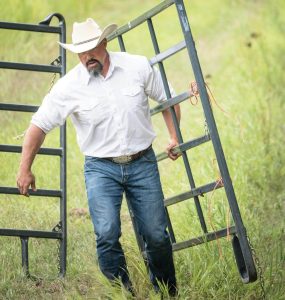
Myers is as hardworking as he is passionate about his commitment to providing quality food for his community. This commitment not only stands out in the ranching world, but clearly translates into his company’s end product.
Founder Jeremy Myers sees the longhorn as the central part of a system that elevates soil health, nutrition, and local food production. “Looking back historically, most families could have sustained themselves and their extended family on 40 acres,” he says. “Realizing that made me ask a lot of questions. I started reading lots of books and listening to lots of podcasts, and [a regenerative approach] started making sense.”
He began implementing regenerative techniques that focus on building topsoil, increasing biodiversity, improving water cycles, and strengthening environmental resilience in order to produce more nutritious food through a system that is also healthy for the environment over the long term. And it didn’t take long for Myers to see results. “When you look at the soil as a living being, you see how you can improve its microbiome by doing little things: rotational grazing, planting cover crops, raising bees on the land,” he says. “You can create more biodiversity within the soil that acts like a sponge. Now the land is more drought resistant, more flood resistant, and pastures produce more grass and better legumes.”
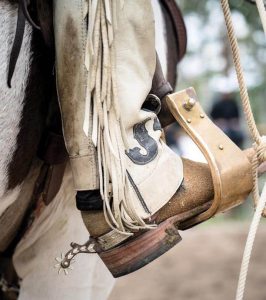
The details of cowboy life in northwest Montana are as uniquely striking as they are necessary.
He acknowledges, though, that there are plenty of challenges for producers interested in transitioning to a regenerative approach. “It’s really hard to get off the path of doing what you’ve always done. And you do have to spend the time and money to do it.” Still, Myers says, the results have been worth it.
The longhorn’s resilience and rugged durability make it uniquely suited to Montana Longhorn Co.’s regenerative vision. The beef is lean compared with other breeds and grain-finished beef. A Texas A&M study showed that grass-fed longhorn beef is exceptionally nutrient dense, with high protein and lower cholesterol and fat than even chicken and turkey. As a product, this, in some ways, makes longhorn more comparable to bison or elk than other beef on the market.
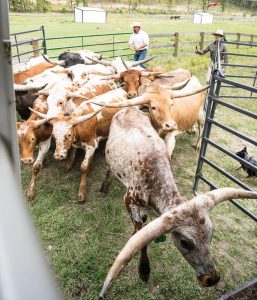
Myers pushes a group of longhorns into trailers in preparation for harvest. He works to keep his cattle as stress free as possible before hauling them to a local processor.
“Longhorns don’t require vaccines and all the yearly boosters that other breeds do because of their disease resistance,” Myers says. “You can produce nutritionally superior beef without injecting them full of hormones and steroids. I don’t want to put those things in my product, so they were a clear choice for me. I’m not here to tell anybody that longhorns are better, but they work better for my program.”
This holistic perspective on the relationships between land, animals, and products extends from the Montana Longhorn Co. ranch to the customer and the local economy. “People are growing more skeptical and untrusting of their food sources these days, and for health-conscious consumers who want to see those animals raised here, grazed here, and processed here, we want to be the option for them,” Myers says. “Honestly, whether you buy from me or the guy down the street, my hope is that you support the local ranchers in your community.”
Beyond the regenerative practices and lean beef, the ethos at the heart of Montana Longhorn Co. lies on a bedrock of cowboy ethics. A poster on the wall reads:
Live each day with courage
Take pride in your work
Always finish what you start
Do what has to be done
Be tough but fair
When you make a promise, keep it
Ride for the brand
Talk less and say more
Remember that some things aren’t for sale
Know where to draw the line
These words are a blueprint for life and business for Myers and his wife, Des. “I think every one of these shows up a little differently in how we build our business, how we raise our kids. It’s all intertwined,” Myers reflects. Cowboy ethics aren’t just an abstract pining for a romanticized past. They’re a living roadmap for every decision, obstacle, and triumph. “For example, with our kids, we have to teach them to live each day with courage and do what has to be done. … Sometimes, you don’t want to go move cows when it’s snowing, but you have to,” he shares, highlighting the day-to-day reality of ranch life. This isn’t just about cold mornings; it’s about teaching resilience, responsibility, and the deep satisfaction that comes from hard work well done.
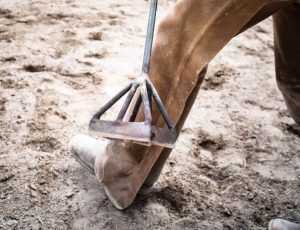
Part of the Montana Longhorn Co. mission is to preserve and encourage the ranching lifestyle. Each summer, Myers opens his doors to the local community to witness and take part in a branding event with the hope that he’s able to expose and inform those interested in this dynamic experience.
“Take pride in your work,” Myers says. “Our work is something I’m putting in my kids’ mouths. It’s feeding my family, it’s feeding my neighbors, it’s feeding my friends. As a rancher, you don’t have the option to fail. … It’s just not an option.”
Myers embodies the determination that fuels Montana Longhorn Co.’s commitment to tradition, innovation, simplicity, and authenticity in a world often dominated by slick marketing and pretense. Clearly, the product they’re creating and the way they go about it is a source of inspiration.
The ranch managers also do their part to share their values and inspire the next generation. To connect with people who live in urban areas or may not have experience with ranching, Montana Longhorn Co. holds educational and hands-on events like “cowboy clinics,” and hosts a summer branding and youth rodeo. “Everybody likes to dress up and play cowboy,” Myers says. “Now, if I could just get people as excited to help mend fences!”
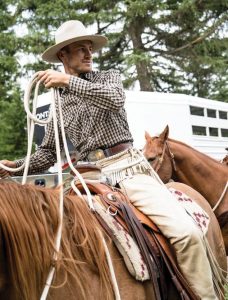
Travis Brown, a ranch hand for Montana Longhorn Co., sorts cattle during the round-up to move them to their winter feeding area.
Brian Birdwell grew up on a ranch in Texas and came to Montana as quickly as he could.
Kyle Stansbury is an editorial and commercial photographer tucked away in northwest Montana. He’s known for unfolding the layers of Western culture through his passion for authentic storytelling and connection with his subject. His client list ranges from USA Today to the Discovery Channel, and quite a bit in between.




No Comments